 This is a PIP: a Pandemic Inspired Purchase. It has pre-pandemic roots, but it was the lack of travel and its associated reasons to take pictures that triggered the purchase of another device for taking them. I know that’s not very logical but I think quite a bit of what we did, and continue to do, during the COVID-19 pandemic is like that — especially what we purchase. I’ll tell about the purchase before I say much about the camera.
This is a PIP: a Pandemic Inspired Purchase. It has pre-pandemic roots, but it was the lack of travel and its associated reasons to take pictures that triggered the purchase of another device for taking them. I know that’s not very logical but I think quite a bit of what we did, and continue to do, during the COVID-19 pandemic is like that — especially what we purchase. I’ll tell about the purchase before I say much about the camera.
There are two sorts of those pre-pandemic roots I mentioned. One is my experience with Olympus in the days before the digital revolution. I was extremely satisfied with the two OM-1s I owned. The wonderfully small size was one reason; reliability was another. A third reason, and one that I never missed an opportunity to mention, was their lack of dependence on battery power. Yes, a battery was required for the built-in meter, but everything else, including focus and shutter, was manual and would function just fine with a dead battery. I guess that’s the same sort of thinking that had me using only cameras with standard AA or AAA batteries for so long after I left 35mm film behind.
The second root can be traced to my curiosity about the new breed of “mirrorless” cameras even though I dislike the name for the same reason I dislike the label “unleaded gas”. The idea of feeding an electronic viewfinder with the same information going to the image recording sensor makes sense but my experience with the concept had not been encouraging. I’d owned a couple of what used to be called “bridge” cameras because (I think) they bridged the gap between compact cameras and DSLRs. They were practical and yielded satisfactory images, but the sluggishness and low resolution of the eye-level viewfinders left me unimpressed. Curiously, I didn’t whine about it in any of the bridge camera My Gear posts (DMC-FZ5, DMC-FZ8, DMC-FZ70). I did mention the sluggishness of the DMC-ZS40 despite it being much improved from the older cameras. By then I’d gotten used to a real SLR again. I now got to wondering just how good were the EVFs in these even newer offerings?
With that background, two things converged in the stay-at-home days of 2020 to make the purchase happen. One was my constantly walking past two containers of coins in my bedroom. For a little more than twenty years, they had frequently, though not regularly, received handfuls of pocket change. The largest, a jug I’d started on after a snack can had become full, was too heavy to move, and I asked myself just what the purpose was. When I’d started the hoards, the possibility of one day dumping them out for gas or groceries was real. That really was no longer the case, and, unable to explain to myself why they were there, I decided to empty them. I began taking the coins to a nearby counting machine where I had the option of getting 93% of their value in cash or 100% of their value in Amazon credit. I went for all the value all the time. Then, just as my Amazon credit balance was reaching an all-time high, Olympus announced a new E-M10IV and folks started discounting E-M10IIIs.
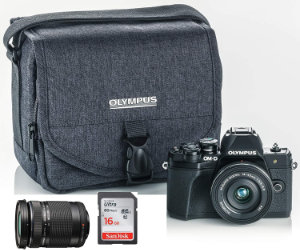 I am surprised to see that Olympus still offers the OM-D E-M10 Mark IIIs (not sure what the ‘s’ means) with a 14-40mm lens for $600. The E-M10 Mark IV is available with the same lens for $700. In September 2020, I bought the pictured kit, which includes a 40-150mm lens that Olympus currently offers for $200, for $598 in what was once pocket change. The included case and SD card were icing.
I am surprised to see that Olympus still offers the OM-D E-M10 Mark IIIs (not sure what the ‘s’ means) with a 14-40mm lens for $600. The E-M10 Mark IV is available with the same lens for $700. In September 2020, I bought the pictured kit, which includes a 40-150mm lens that Olympus currently offers for $200, for $598 in what was once pocket change. The included case and SD card were icing.
I was quite impressed when the kit arrived. Although I didn’t list it as a “root”, I think I was just about as curious about the Micro Four Thirds form factor as I was about “mirrorless” viewfinders. The camera’s size reminded me of those distant OM-1 days. Other things about the E-M10 also reminded me of the OM-1 including the general feel and the perceived quality. Photo quality was also good with a sensor of approximately 16 megapixels. With the pancake style 14-40 lens mounted, the camera fits into many pockets and another pocket might hold the 40-150.
So, with all those good things going for it, why has it taken me more than a year to finish this post? The short answer is “lack of use” and the reason for that lack of use is almost the camera’s only negative and it is actually just a personal problem. Even with the tiny size of my cast of cameras, it wasn’t easy finding a role for the E-M10 to play.
The Olympus shares work with a Nikon D5100 and a Panasonic DMC-ZS40. Note that none of these cameras is at all high-end. All three are more or less entry-level for their type. When size is no object, the Nikon wins. It’s hardly the best camera in THE world but it is the best camera in MY world. When size is very much an object, the Panasonic wins. It’s not only the smallest of the three but with a 30X (24–720 mm equivalent) zoom, it is the most versatile. Of course, when the word versatile enters the conversation, my Pixel 4a phone demands attention. It’s almost always at hand and I must reluctantly admit that it does a mighty fine job of taking pretty good pictures in pretty bad situations.
I did find a role for the Olympus during my most recent road trips, but before I reveal what that is I’m going to get in a couple of digs. One is the major flare seen with backlit subjects. This is something it shares with the Panasonic and I theorized it was due to their smallish sensor size. I haven’t totally thrown that possibility out but people more knowledgeable than me have suggested it might be lens quality. The actual problem at the heart of my second dig was operator error but the camera encouraged it. At a point when I really intended to seriously put the camera to use, I found the camera’s field of view so narrow that I simply scrapped my plans and used the Nikon in situations I had thought to use the Olympus. I blamed this on the Micro Four Thirds system. I eventually figured out that the default setting of the rather prominent Fn2 button is to activate 2X digital zoom and that I had apparently pressed it at some point. It was a misunderstanding brought on by unfamiliarity with the camera (which I’m still drenched in) but it was irritating nonetheless.
That role I found for the Olympus? Car seat companion. I like to take road pictures; always one-handed and often, though not always, through a dirty windshield. Doing this with the Nikon or Pixel is too awkward to even think about except on an empty highway or at a dead stop. The Panasonic is actually pretty good at it — once it’s fired up. But firing it up, even when it is on and just sleeping, is a sluggish affair. When sleeping, the Olympus wakes up rather quickly with a touch of the shutter button. It is a bit heavier than the Panasonic but is nearly the same size with a rear screen that is at least the Panasonic’s equal. Even with my digital zoom interfering faux pas, it was good at this and it became even better once I rectified my goof.
As shown by that digital zoom thing, I’ve made little effort to understand what is obviously a very capable and somewhat complex camera. Heck, there might even be a setting that would vanquish that backlit flare. The Nikon D5100 has been in fairly heavy use for over eight years and I know I still don’t understand half of its capabilities. I don’t expect to master the Olympus E-M10 anytime soon but I do expect to take some OK pictures with it. All in all, I’m pretty happy with my PIP.
My Gear – Chapter 21 — Garmin zūmo 396LMTS
 The title of this post is based on accepting that people climb down as well as up and that rappelling is a member of the climbing family. That’s because rappelling from the top of a twenty-three-story building is how the man in red entered Cincinnati last night. And that’s how he intends to enter the city every Saturday night from now until his other job has him busy all night long on the 25th. The daring drop is part of an event called Downtown Dazzle.
The title of this post is based on accepting that people climb down as well as up and that rappelling is a member of the climbing family. That’s because rappelling from the top of a twenty-three-story building is how the man in red entered Cincinnati last night. And that’s how he intends to enter the city every Saturday night from now until his other job has him busy all night long on the 25th. The daring drop is part of an event called Downtown Dazzle. I reached Fountain Square with enough time before Santa’s arrival to walk a half-block one direction for dinner and a half-block in the other direction for a beer. Between the two, I snapped a picture of the city’s 56 foot Christmas tree which was officially lighted in a ceremony just yesterday.
I reached Fountain Square with enough time before Santa’s arrival to walk a half-block one direction for dinner and a half-block in the other direction for a beer. Between the two, I snapped a picture of the city’s 56 foot Christmas tree which was officially lighted in a ceremony just yesterday. There was a time when the Christmas tree really dominated Fountain Square during the holiday season. It still dominates the view from outside the square but it’s the skating rink that dominates the square itself. There has been a rink on the square since 2006 but it grew in size a few years ago. Last year, bumper cars were added and they’re back again this year. I was hoping to get my first look at the cars but, although they had operated earlier in the day, they were parked for Downtown Dazzle and 100% of the rink was available to skaters.
There was a time when the Christmas tree really dominated Fountain Square during the holiday season. It still dominates the view from outside the square but it’s the skating rink that dominates the square itself. There has been a rink on the square since 2006 but it grew in size a few years ago. Last year, bumper cars were added and they’re back again this year. I was hoping to get my first look at the cars but, although they had operated earlier in the day, they were parked for Downtown Dazzle and 100% of the rink was available to skaters.

 At a few minutes past 7:00, we were alerted to some “breaking” (but not very shocking) news. Reporters appeared on the square’s giant TV describing a UFO of some sort circling around downtown Cincinnati. When it was thought to have landed, searchlights played over several nearby buildings trying to locate the craft or its occupants. Three figures were soon spotted on top of the Huntington Center, and we all got to watch one reindeer, one Santa, and one elf descend to a much lower rooftop.
At a few minutes past 7:00, we were alerted to some “breaking” (but not very shocking) news. Reporters appeared on the square’s giant TV describing a UFO of some sort circling around downtown Cincinnati. When it was thought to have landed, searchlights played over several nearby buildings trying to locate the craft or its occupants. Three figures were soon spotted on top of the Huntington Center, and we all got to watch one reindeer, one Santa, and one elf descend to a much lower rooftop.

 The instant that the trio reached the target roof and disappeared from sight, the first volley of fireworks exploded. For roughly twelve minutes, the Genius of Water and the Carew Tower were illuminated by the rockets’ red (and other colors) glare. Pretty cool! Be there at 7:00 PM on each of the next three Saturdays for more breaking news.
The instant that the trio reached the target roof and disappeared from sight, the first volley of fireworks exploded. For roughly twelve minutes, the Genius of Water and the Carew Tower were illuminated by the rockets’ red (and other colors) glare. Pretty cool! Be there at 7:00 PM on each of the next three Saturdays for more breaking news.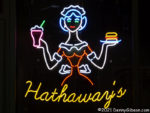
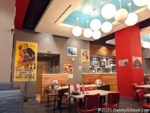
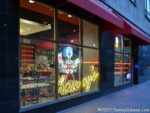 Although I had photos in hand, I did not identify my dinner spot when I mentioned it above. That was partly because it did not fit with describing the Dazzle and partly (maybe mostly) because I wanted to finish the post and go to bed. Now that deadlines are past and I’m no longer dozing off, I’m tacking it on. Hathaway’s Diner has been operating in Cincinnati since 1956 but it wasn’t here. It was semi-deep inside the Carew Tower with no windows. The current owner has described it as a cave and I can’t disagree. It nearly closed in 2019 but a renegotiated lease kept it going. Then, just last month, they moved into a spot vacated by Frisch’s. It’s still in the Carew Tower but it now has windows and an entrance right on the street. There is also an entrance from inside the tower and that’s how I arrived. I exited directly to the street where, despite the chilly temperature, the diner was going hatless. I’d only eaten breakfast at the former location but went for a very good patty melt on my first time at the new, more visible and convenient, spot. I’ll be back. Probably for breakfast.
Although I had photos in hand, I did not identify my dinner spot when I mentioned it above. That was partly because it did not fit with describing the Dazzle and partly (maybe mostly) because I wanted to finish the post and go to bed. Now that deadlines are past and I’m no longer dozing off, I’m tacking it on. Hathaway’s Diner has been operating in Cincinnati since 1956 but it wasn’t here. It was semi-deep inside the Carew Tower with no windows. The current owner has described it as a cave and I can’t disagree. It nearly closed in 2019 but a renegotiated lease kept it going. Then, just last month, they moved into a spot vacated by Frisch’s. It’s still in the Carew Tower but it now has windows and an entrance right on the street. There is also an entrance from inside the tower and that’s how I arrived. I exited directly to the street where, despite the chilly temperature, the diner was going hatless. I’d only eaten breakfast at the former location but went for a very good patty melt on my first time at the new, more visible and convenient, spot. I’ll be back. Probably for breakfast.
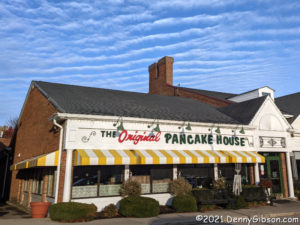
 This is a PIP: a Pandemic Inspired Purchase. It has pre-pandemic roots, but it was the lack of travel and its associated reasons to take pictures that triggered the purchase of another device for taking them. I know that’s not very logical but I think quite a bit of what we did, and continue to do, during the COVID-19 pandemic is like that — especially what we purchase. I’ll tell about the purchase before I say much about the camera.
This is a PIP: a Pandemic Inspired Purchase. It has pre-pandemic roots, but it was the lack of travel and its associated reasons to take pictures that triggered the purchase of another device for taking them. I know that’s not very logical but I think quite a bit of what we did, and continue to do, during the COVID-19 pandemic is like that — especially what we purchase. I’ll tell about the purchase before I say much about the camera. I am surprised to see that Olympus still offers the OM-D E-M10 Mark IIIs (not sure what the ‘s’ means) with a 14-40mm lens for $600. The E-M10 Mark IV is available with the same lens for $700. In September 2020, I bought the pictured kit, which includes a 40-150mm lens that Olympus currently offers for $200, for $598 in what was once pocket change. The included case and SD card were icing.
I am surprised to see that Olympus still offers the OM-D E-M10 Mark IIIs (not sure what the ‘s’ means) with a 14-40mm lens for $600. The E-M10 Mark IV is available with the same lens for $700. In September 2020, I bought the pictured kit, which includes a 40-150mm lens that Olympus currently offers for $200, for $598 in what was once pocket change. The included case and SD card were icing.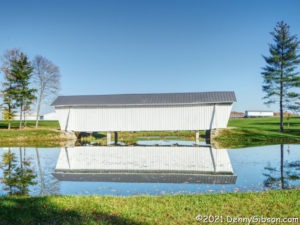
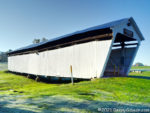
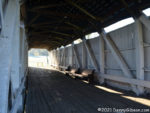
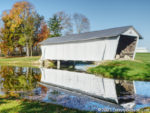


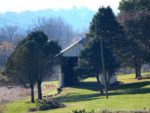
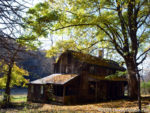
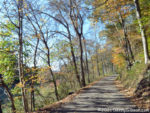
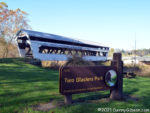


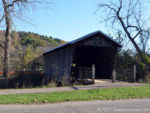

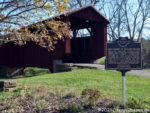
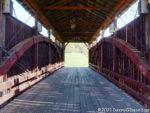
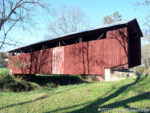
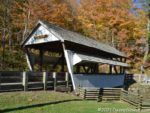
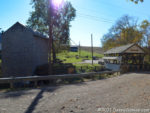

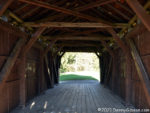
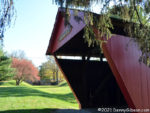

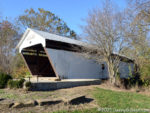


 Jim Grey blogs, collects film cameras, uses those cameras, develops the film himself, walks, bikes, and observes. Put them together and what have you got? This book.
Jim Grey blogs, collects film cameras, uses those cameras, develops the film himself, walks, bikes, and observes. Put them together and what have you got? This book.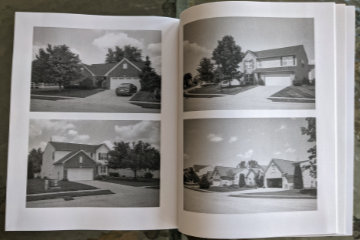 It is a story about the neighborhood in which he lives, and where he interspersed COVID-triggered working-at-home with some calorie-burning walking-near-home. We are introduced to the neighborhood as a collection of modestly priced homes in an area of pricier residences. A big attraction is access to very good schools at somewhat bargain prices. Although the location makes them bargains, they are hardly shabby and actually look quite attractive — from the front.
It is a story about the neighborhood in which he lives, and where he interspersed COVID-triggered working-at-home with some calorie-burning walking-near-home. We are introduced to the neighborhood as a collection of modestly priced homes in an area of pricier residences. A big attraction is access to very good schools at somewhat bargain prices. Although the location makes them bargains, they are hardly shabby and actually look quite attractive — from the front.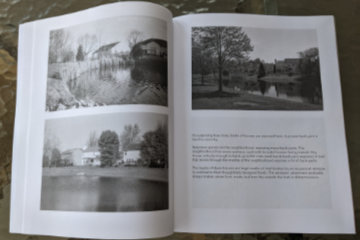 Construction is wood frame with vinyl siding and brick accents. Those accents, however, are almost entirely on the front of the houses. The other three sides are the focus of the story. Part of Grey’s story is about these sides being exposed by the curving streets, numerous retention ponds, and open spaces created by electric and gas lines.
Construction is wood frame with vinyl siding and brick accents. Those accents, however, are almost entirely on the front of the houses. The other three sides are the focus of the story. Part of Grey’s story is about these sides being exposed by the curving streets, numerous retention ponds, and open spaces created by electric and gas lines.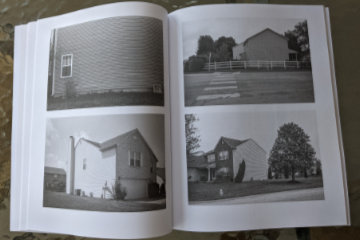 The rest of the story is about those exposed surfaces and areas being a long way from handsome. The story’s name comes from the large expanses of vinyl siding exposed by those curves and ponds. Windows are few and from the outside often appear to be placed rather randomly and often awkwardly. Many side walls are unbroken by any windows at all.
The rest of the story is about those exposed surfaces and areas being a long way from handsome. The story’s name comes from the large expanses of vinyl siding exposed by those curves and ponds. Windows are few and from the outside often appear to be placed rather randomly and often awkwardly. Many side walls are unbroken by any windows at all. There are few words but lots of pictures. The pictures are black and white and large. The most common arrangement is two 4×6 inch photos to a page. Where words do appear, they typically share a page with one of those 4×6 photos. Occasionally a photo gets a page all to itself which lets it grow to approximately 5 1/2 by 8 1/4 inches. Grey has changed publishing platforms (from Blurb to Amazon) for this project which results in some physical differences from the previous essays. The pages are slightly smaller (8×10 vs 8.5×11) and the paper used is uncoated rather than semi-gloss. Photo quality does suffer but again it is the subject of the picture that is important. The pictures are here to document the subject and illustrate Grey’s story, not to be admired in and of themselves. It’s an assignment they handle quite well.
There are few words but lots of pictures. The pictures are black and white and large. The most common arrangement is two 4×6 inch photos to a page. Where words do appear, they typically share a page with one of those 4×6 photos. Occasionally a photo gets a page all to itself which lets it grow to approximately 5 1/2 by 8 1/4 inches. Grey has changed publishing platforms (from Blurb to Amazon) for this project which results in some physical differences from the previous essays. The pages are slightly smaller (8×10 vs 8.5×11) and the paper used is uncoated rather than semi-gloss. Photo quality does suffer but again it is the subject of the picture that is important. The pictures are here to document the subject and illustrate Grey’s story, not to be admired in and of themselves. It’s an assignment they handle quite well.